‘Seven Magic Mountains’ adds vivid color to the desert — PHOTOS
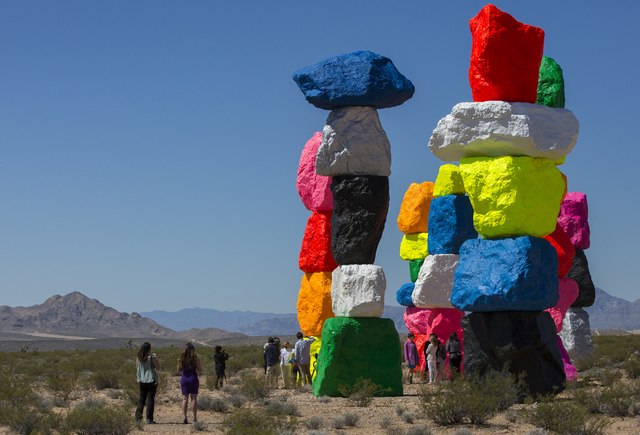
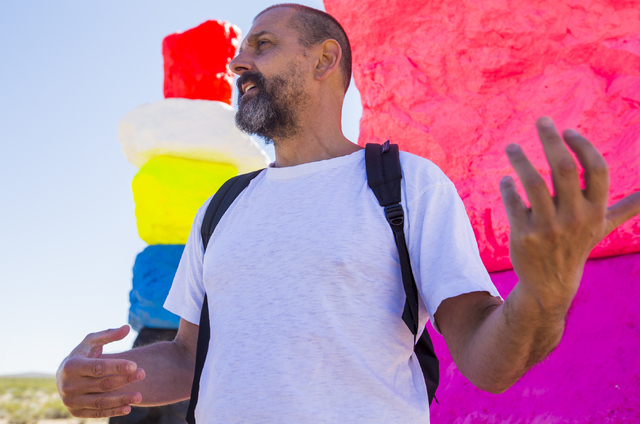


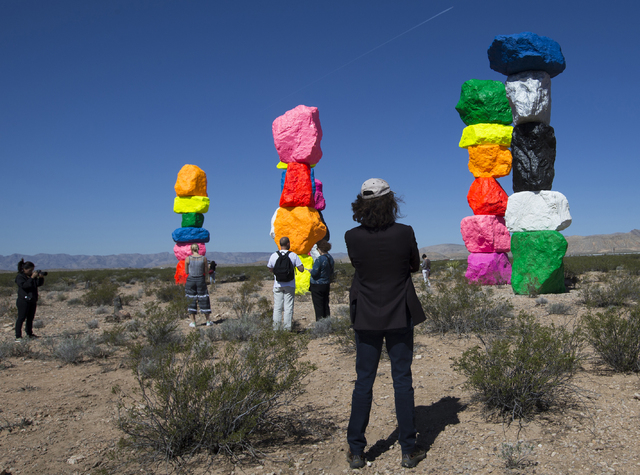

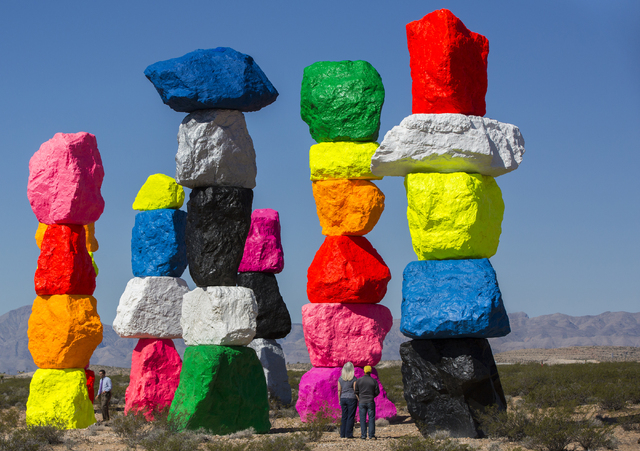

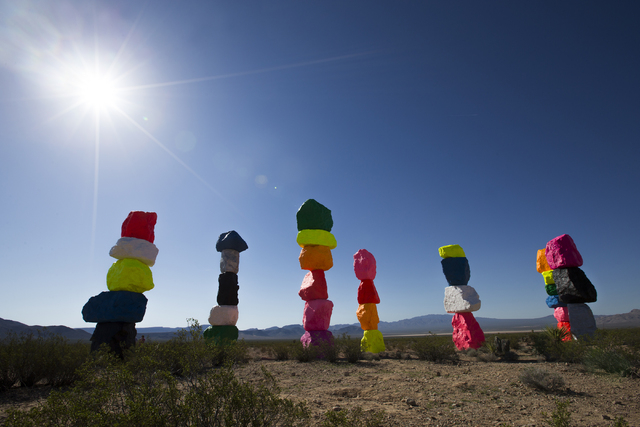
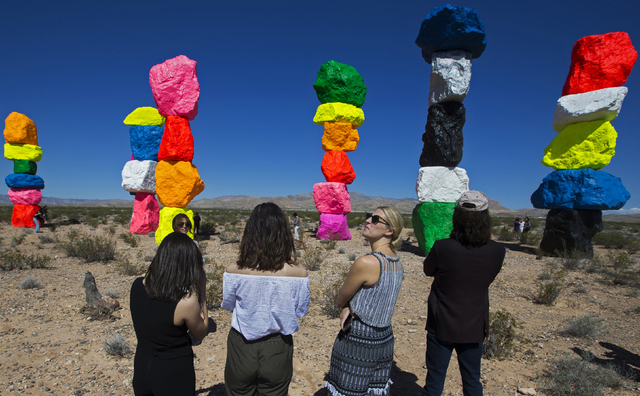

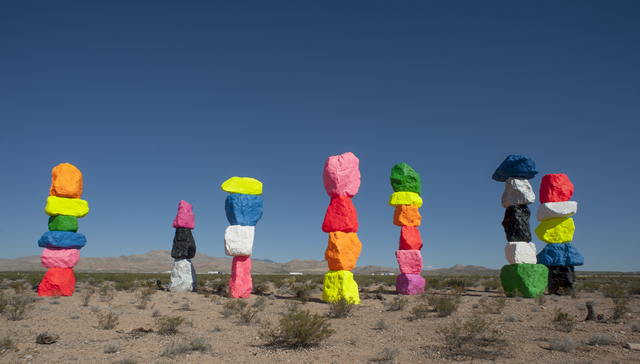



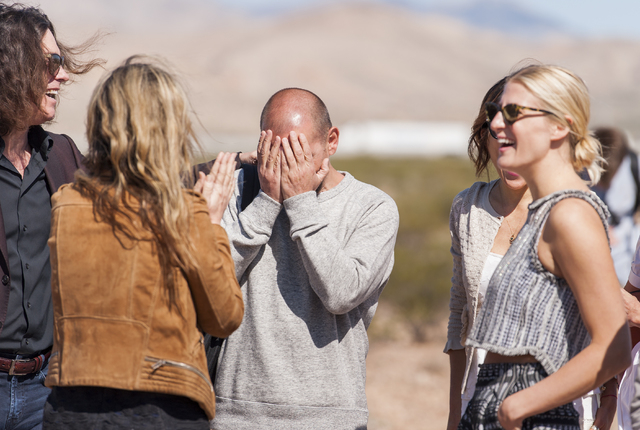

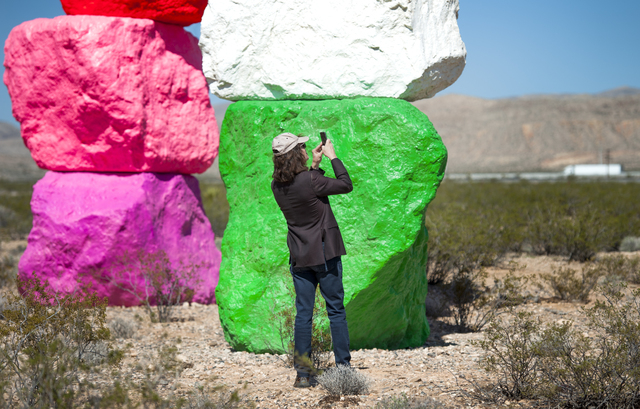
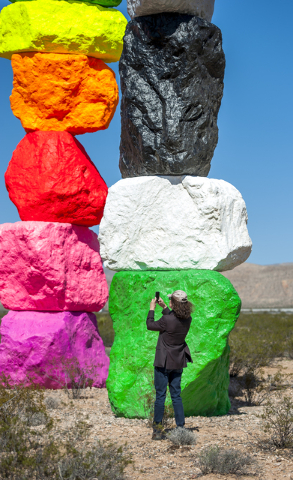
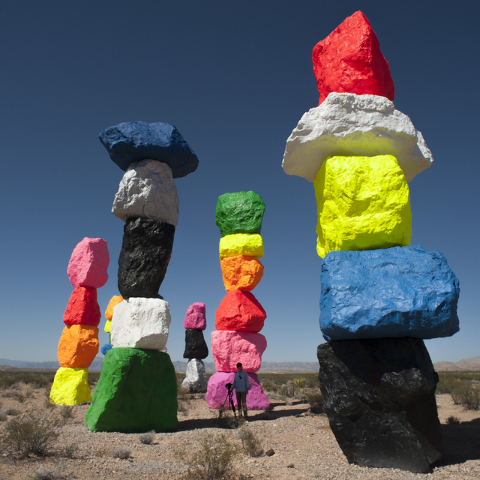
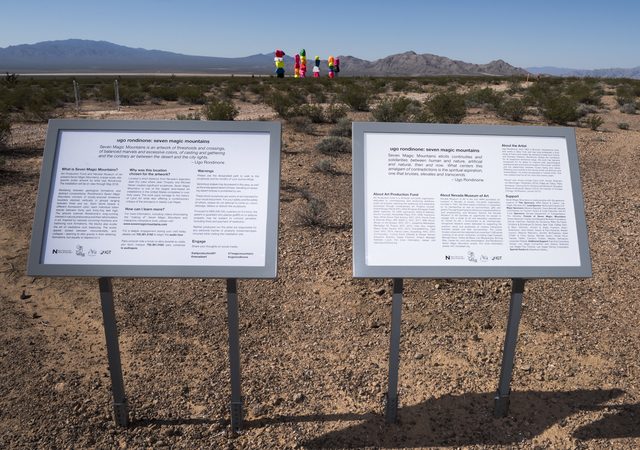

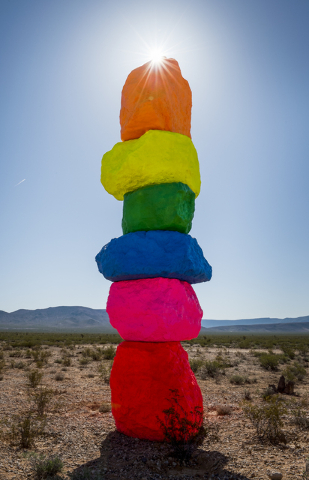
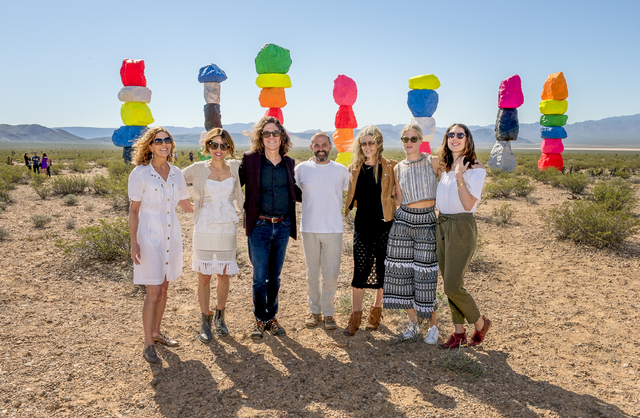

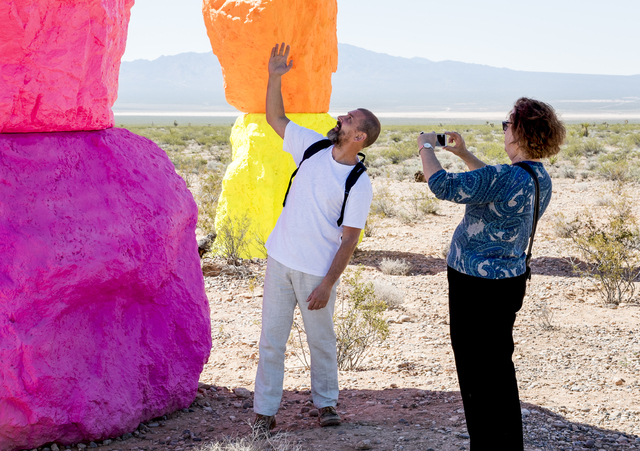
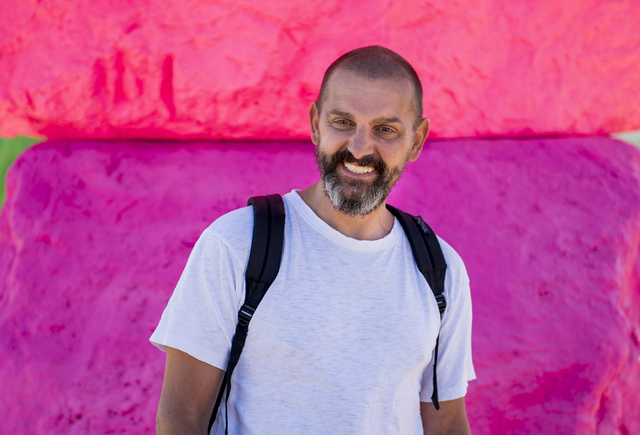


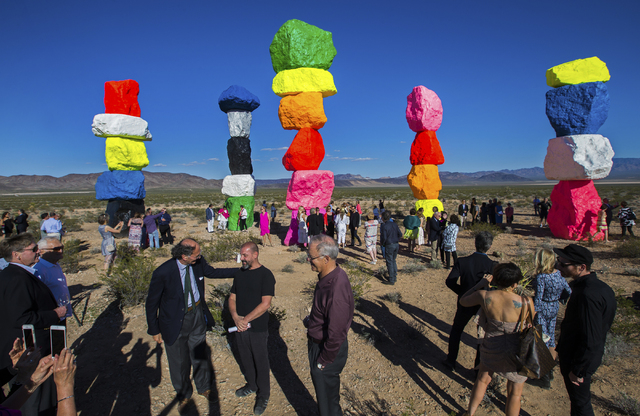
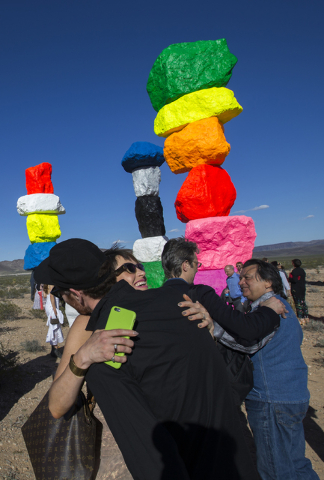


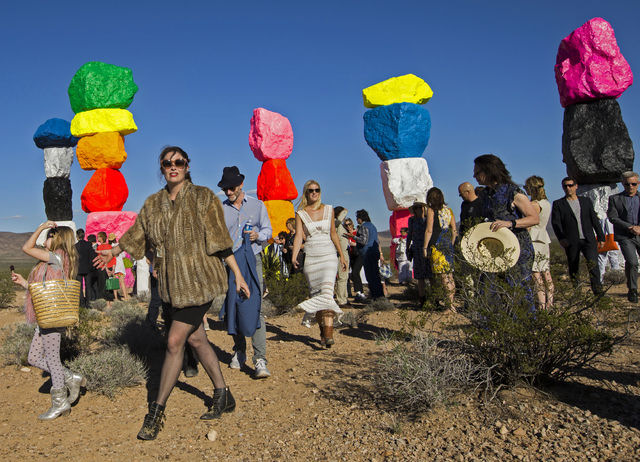


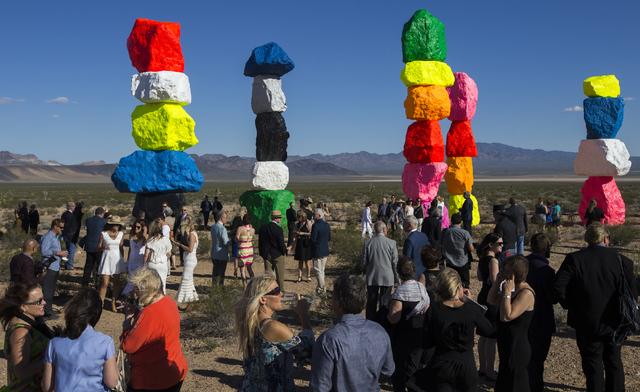
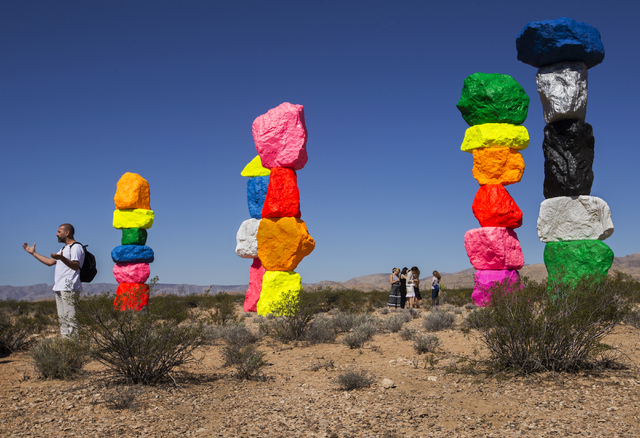
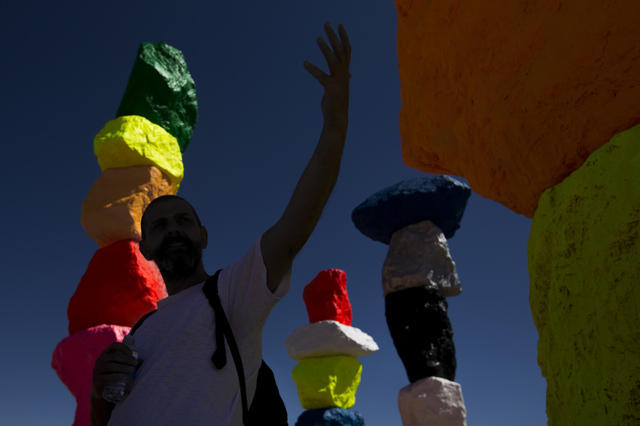
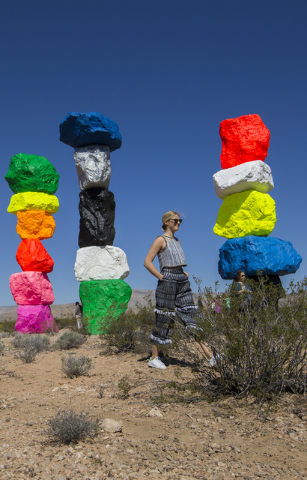
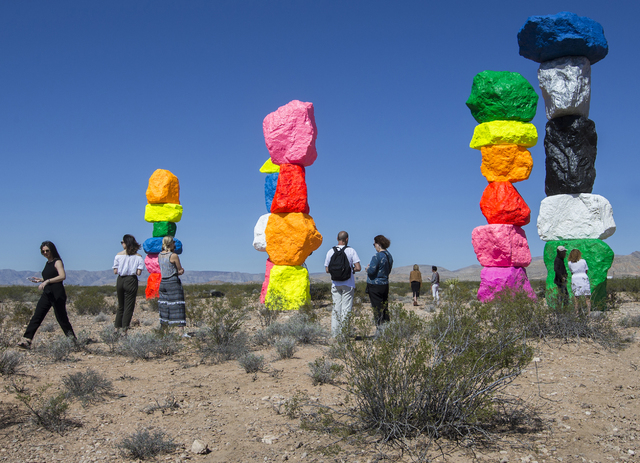


The signs on Interstate 15 read “Seven Magic Mountains: Next Exit.”
Not that anyone would need a sign to find Ugo Rondinone’s latest land art project: seven stacks of Nevada limestone boulders adorned with fluorescent hues.
The Day-Glo colors — brilliant pinks, deep blues and bright greens, eye-searing yellow-orange, Silver State silver, black and white — offer vivid contrast with the muted greens and browns of the Jean dry lake bed.
That’s by design, according to Swiss-born, New York-based artist Rondinone, whose “Seven Magic Mountains” has been five years — and more than $3 million — in the making.
“The seed was to do a continuation of land art,” which has been created at Jean Lake since the 1960s, Rondinone explains.
“In the past, land art has been camouflaging art,” he says, designed to fit into the terrain. But “by giving a layer of color, we are bringing together the pop art movement and land art.”
In addition to the setting’s link with previous land art projects, the “Seven Magic Mountains” location — 10 miles south of the Las Vegas Boulevard-St. Rose Parkway intersection — is adjacent to where the San Pedro, Los Angeles &Salt Lake Railroad placed its final spike in 1905, setting the stage for the founding of Las Vegas.
“The site is magical,” Rondinone says. “It’s historical. It’s charged.”
The surrounding desert — so near, and yet so far, from Las Vegas’ man-made glitter — also creates a crucial contrast, he adds.
“You cannot ignore Las Vegas. You have a contrary air between the city lights and the natural setting of the desert. What fascinates me is the silence,” the artist says.
His “Seven Magic Mountains” may be 25- to 35-feet tall, but “scale doesn’t matter,” in Rondinone’s view, because the surrounding desert dwarfs everything.
The project’s towering formations — made up of 33 boulders, weighing between 20,000 pounds and 25 tons — were inspired by Utah’s hoodoos and precariously balanced rock formations.
“Seven Magic Mountains” officially opens to the public Wednesday, following opening events for those involved in its creation, including its producers, the New York-based Art Production Fund and the Reno-based Nevada Museum of Art.
“I feel like a proud father,” says David Walker, the museum’s executive director. “It’s like nothing you’re going to see anywhere else in the world.”
Even before the public debut, however, assorted passers-by were checking out the jagged rock towers with the eye-popping paint job.
“I’ve been forced to stop here by my wife,” says Mark Atkinson of Yucca Valley, California, only partly in jest.
“We just saw it on the way through,” adds his wife, Linda Atkinson, who notes that the seven stacked-rock towers “look like big marshmallows.”
Camera-toting Henderson resident James Dean read about “Seven Magic Mountains” last week in the Las Vegas Review-Journal, but preliminary coverage “didn’t show the fluorescent colors. All of a sudden, you see these glowing structures in the desert.”

More than two dozen people — from the sponsoring institutions to Rondinone’s staff, consultants and employees of Las Vegas Paving, who quarried the rocks — were involved in making “Seven Magic Mountains” materialize on the road between Sloan and Jean.
Although the project’s colors were chosen, “the form itself, it’s by accident,” Rondinone explains. “We had all the stones, every single stone,” and photographed each one “from all four sides,” then started stacking, “like you play around with Legos.”
The extended development process involved everything from carving the boulders to building a left-turn lane on Las Vegas Boulevard to satisfy Clark County officials’ traffic concerns.
Now that “Seven Magic Mountains’ ” two-year run has begun, “I’m still overwhelmed with adrenaline,” Rondinone says. “It’s such a huge thing, I have no time to get in a depression” because it’s done. (Besides, he has several other projects upcoming, including one where he’s “casting 12 ancient olive trees, 2,000 years old, for the Coliseum in Rome.”)
As clusters of people approach the “Seven Magic Mountains” — huddling in the shade cast by the rock columns, looking up at the sky and then down at the scrubby creosote and yucca, listening to the whir of I-15 traffic — Jim and Jill Saiz of Moreno Valley, California, wondered how long it would take for visitors “to add their own graffiti,” Jim says.
Warnings that “you are not allowed to climb on the rocks makes people think, ‘Oh, I wanna climb,’ ” he adds.
There are plenty of warnings at the “Seven Magic Mountains” site — one reads, “Venomous snakes may be present in this area; please stay on the designated path” — but Rondinone seems confident that visitors to the artwork “will embrace and will protect” it.”
Maybe it’s the knowledge that there’s a layer of anti-graffiti paint protecting his magic mountains.
Or maybe it’s the hope that “Seven Magic Mountains” will be like such public sculptures as “the Eiffel Tower or (Mount) Rushmore,” he says. “You don’t see graffiti on Rushmore. People are proud of what they have.”
Read more stories from Carol Cling at reviewjournal.com. Contact her at ccling@reviewjournal.com and follow @CarolSCling on Twitter.
If you go
Highway signs alert drivers to “Seven Magic Mountains” on both northbound and southbound Interstate 15. Here’s a highway tipsheet to the stacked rock sculptures, which are impossible to miss — at least in daylight — thanks to their bright fluorescent colors.
From Las Vegas: Take Interstate 15 south to Sloan Road (exit 25), then go left (east) to Las Vegas Boulevard; drive approximately seven miles south and the artwork will appear on your left (east).
From Los Angeles: Take Interstate 15 north to Jean, Nev. (exit 12), then go right (east) on State Route 161 toward Las Vegas Boulevard. Turn left (north) and drive approximately five miles; the artwork will appear on your right (east).
Park in the on-site lot; street parking is discouraged. Admission is free.


















